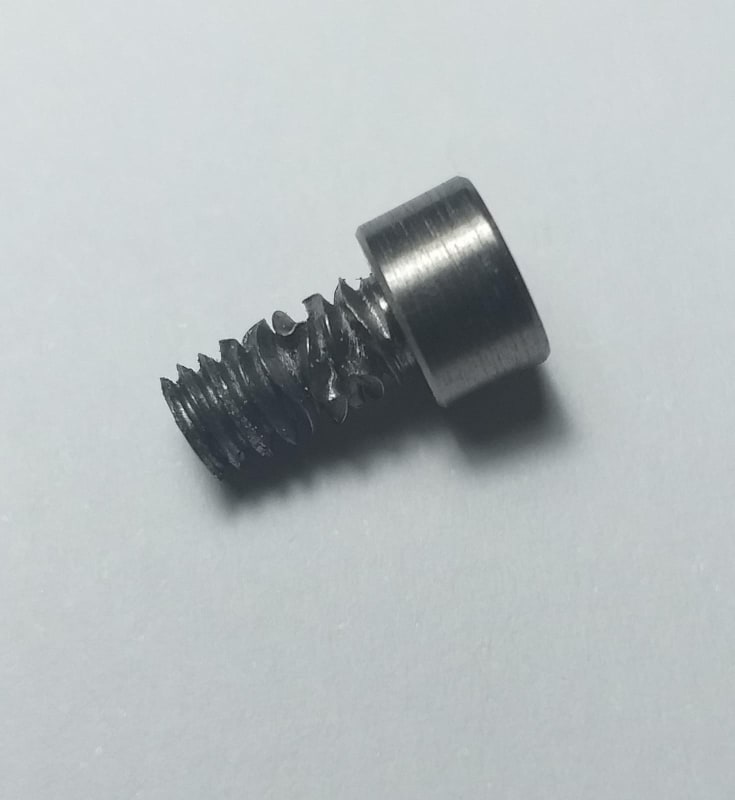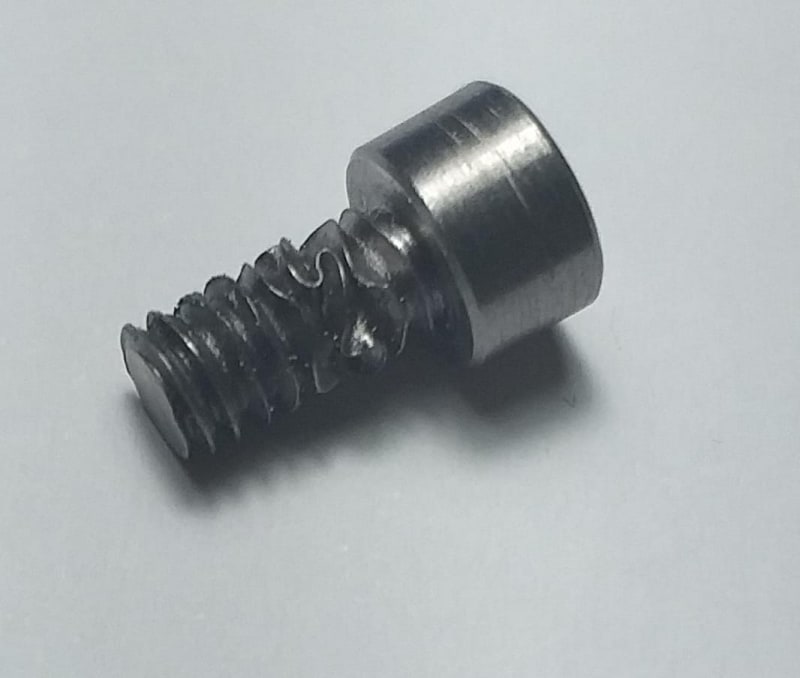I have a 8-33 Tantalum bolt which we manufactured according to ANSI Standard.
When tightening the bolt we got a strage and unfamiliar (at least to me) failure of the bolt's thread (I attached photos).
I thought that when designing according to the standard the shank should fail before the threads.
In addition, even more strange is the thread didn't really tear off the shank but it looke like it plastically deformed.
What can you say about it ?
?


When tightening the bolt we got a strage and unfamiliar (at least to me) failure of the bolt's thread (I attached photos).
I thought that when designing according to the standard the shank should fail before the threads.
In addition, even more strange is the thread didn't really tear off the shank but it looke like it plastically deformed.
What can you say about it



![[smile] [smile] [smile]](/data/assets/smilies/smile.gif)